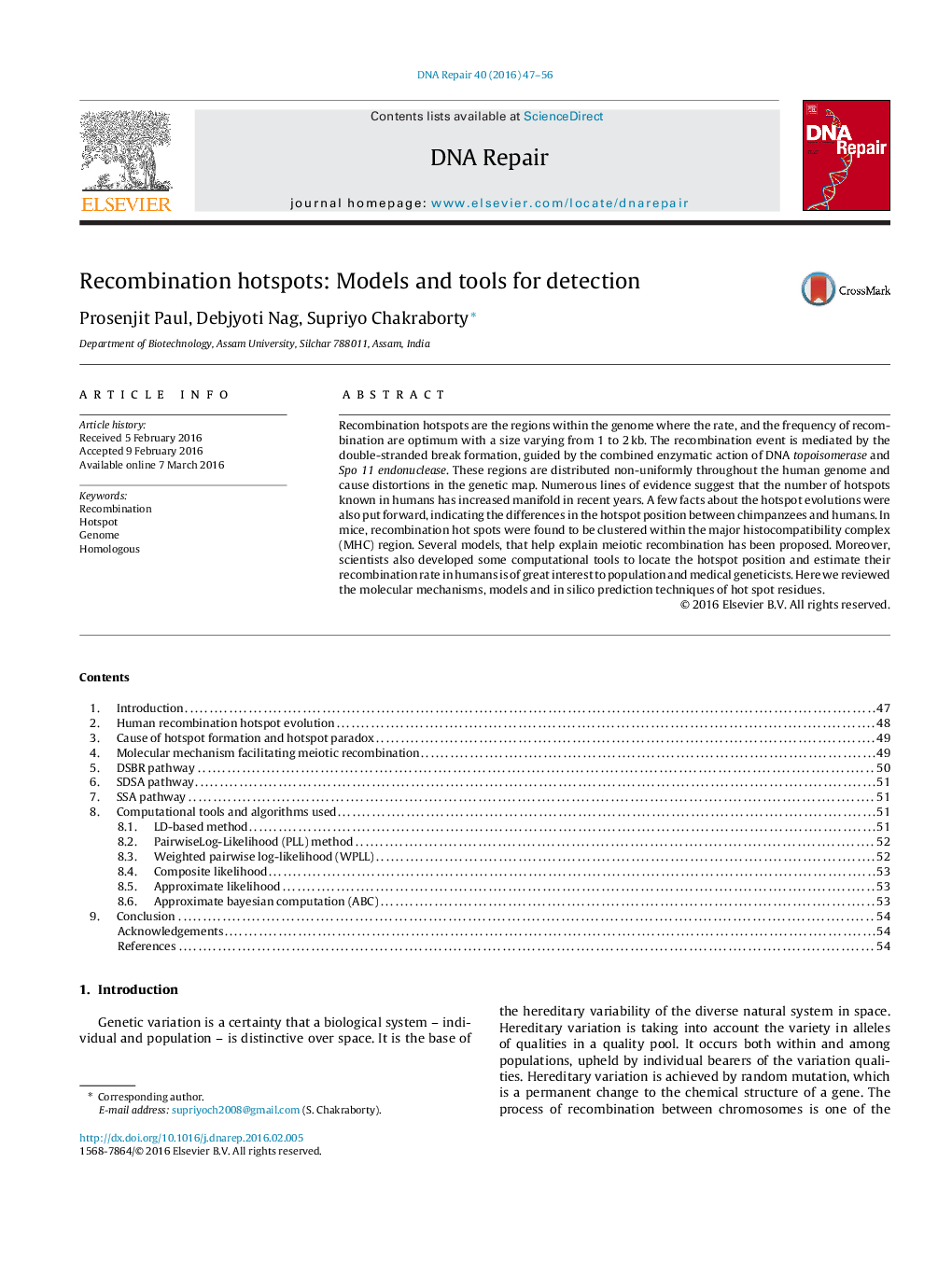| Article ID | Journal | Published Year | Pages | File Type |
|---|---|---|---|---|
| 1979996 | DNA Repair | 2016 | 10 Pages |
Abstract
Recombination hotspots are the regions within the genome where the rate, and the frequency of recombination are optimum with a size varying from 1 to 2Â kb. The recombination event is mediated by the double-stranded break formation, guided by the combined enzymatic action of DNA topoisomerase and Spo 11 endonuclease. These regions are distributed non-uniformly throughout the human genome and cause distortions in the genetic map. Numerous lines of evidence suggest that the number of hotspots known in humans has increased manifold in recent years. A few facts about the hotspot evolutions were also put forward, indicating the differences in the hotspot position between chimpanzees and humans. In mice, recombination hot spots were found to be clustered within the major histocompatibility complex (MHC) region. Several models, that help explain meiotic recombination has been proposed. Moreover, scientists also developed some computational tools to locate the hotspot position and estimate their recombination rate in humans is of great interest to population and medical geneticists. Here we reviewed the molecular mechanisms, models and in silico prediction techniques of hot spot residues.
Keywords
Related Topics
Life Sciences
Biochemistry, Genetics and Molecular Biology
Biochemistry
Authors
Prosenjit Paul, Debjyoti Nag, Supriyo Chakraborty,
